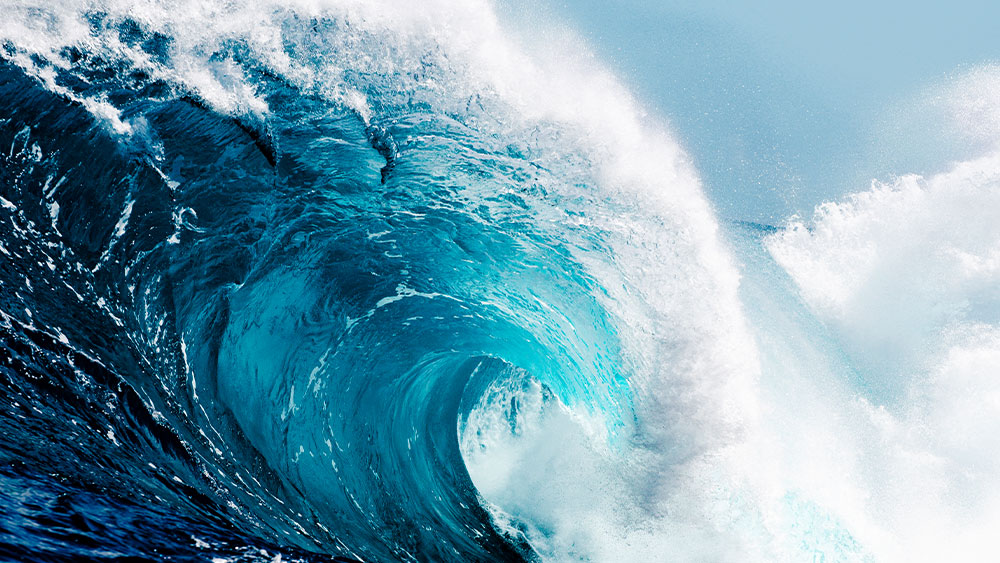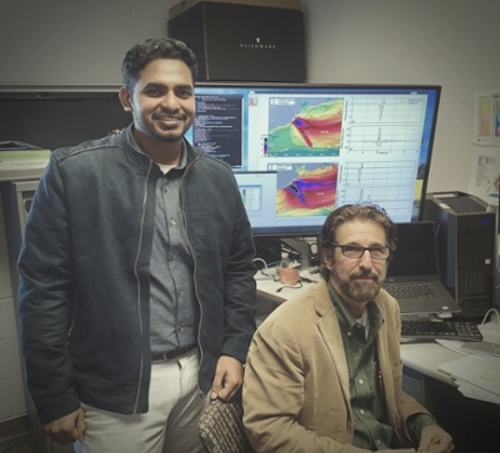
Volcanic tsunamis, triggered by an underwater eruption, typically occur with little warning – devastating the coastal areas and communities they impact.
Richards Sunny, a doctoral candidate in the Department of Ocean Engineering at Texas A&M University at Galveston, is developing and improving Computational Fluid Dynamics simulations to map, predict and research volcanic tsunamis.

“Results from this work would help us to predict the propagation and inundation of potential underwater volcanic tsunamis and help emergency managers and agencies create evacuation plans and save lives,” said Sunny.
Sunny started his ocean engineering journey 10 years ago at the Indian Institute of Technology Madras, one of the top universities in India. Diving into the field as a freshman, he quickly fell in love with it.
“It had all the elements I wished for,” said Sunny. “Challenging optimization problems, such as designing deep-water floating platforms, the potential to develop innovative ideas in the field of renewable ocean energy to help humankind, and the ability to study, analyze, model and predict natural disasters, such as tsunamis, to save lives.”
Inspired by the wide range of applications and opportunities found within ocean engineering, Sunny traveled overseas to pursue a master’s and doctoral degree from Texas A&M, where he found a new passion: research.
The exciting part of research, to me, is the implementation of new ideas to tackle the problem you’re faced with. If it works, then great. But, if it fails, we work to learn why it failed and that teaches us something new or opens up another door to research.
A catastrophic problem
Since he was a graduate student, Sunny has worked under Dr. Juan Horrillo, associate professor in the Department of Ocean Engineering and leader of the Texas A&M University at Galveston Tsunami Research Group, on a National Science Foundation-funded project focusing on volcanic tsunami modeling.
In the last 250 years, they said about a fourth of all fatalities directly attributable to volcanic eruptions are due to the tsunamis caused by the eruption. Additionally, the two deadliest non-tectonic tsunamis are from the 1883 Krakatoa eruption and Japan's Mount Unzen lava dome collapse in 1792. More recently, in December 2018, a tsunami followed an eruption and partial collapse of the Anak Krakatau volcano, leaving more than 400 dead and over 14,000 people injured.
While the technology behind tsunami research has modernized and advanced, there are still many unknowns associated with underwater volcanic tsunamis, including the characterization of tsunami waves and the relationship between the source eruption mechanism and wave generation.
A calling for more
The project, done in collaboration with Georgia Institute of Technology and Oregon State University, started with the Galveston team conducting numerical simulations of an eruption of the underwater Kick ‘em Jenny volcano in the Caribbean Sea. As Sunny described, their simulations and models served as a foundation for physical experiments conducted at Oregon State University.
With the physical tests complete, Sunny and his fellow team members are numerically reproducing the experiment based on the input conditions and results therein – combining traditional experimentation with modern technology to fill in the data gaps that physical experimentation cannot provide due to cost, safety or resources. As such, the team’s models will serve as a vital tool in the assessment and mitigation of the submarine volcanic tsunami hazard, disaster response and planning.
Along this same line, Sunny’s thesis is expanding upon these models by developing an algorithm that will help in interfacial tracking of fluids and their fluxing for computational fluid dynamics simulations.
“We are also working on implementing this algorithm into TSUNAMI3D (the model Horrillo developed in the Tsunami Research Group) to evaluate its performance and to model and simulate full-scale volcanic tsunami cases,” said Sunny. “This algorithm is expected to improve the accuracy of interface tracking and thereby increase the accuracy of simulations as they progress in time, breaking waves, for example.”
In addition to saving lives through the research implementation of accurate tsunami simulations and providing a greater understanding and insight into how underwater volcanic eruptions cause devastating tsunamis, Sunny is looking toward his future career in research with excitement.
“At the end of the day I believe all our decisions need to be based on what we are called to do, rather than what our interests are,” said Sunny. “I believe it is my call to serve others and I will try my best to choose a career option which fulfills my calling.”